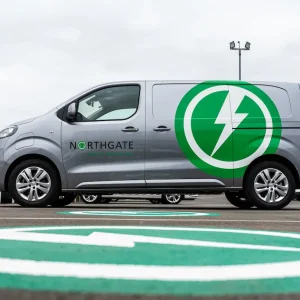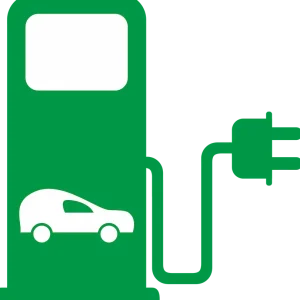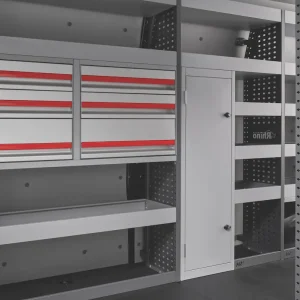Collecting essential data and planning infrastructure early are among the key things fleet managers should do when they consider adopting electric vehicles.
Those were among the pieces of advice on offer at the first National Green Mobility Conference, organised by What Van?
The event presented a programme of speakers designed to cover all the angles when it comes to EV adoption, as well as the chance for attendees to have a go in some electrified vehicles.
The speakers offered top tips – but also words of caution about vehicle supply and infrastructure development.
Among their number was Paul Hollick, managing director of consultancy TMC and chairman of fleet training organisation ICFM. He said collecting data was crucial to successful electrification.
“Data is essential to developing a strategy,” he said. “It is fundamentally important – to be
able to analyse trips, analyse everything to make sure you can maximise the adoption process.”
Hollick said managers should be able to collect data – including which vehicles they have and where they are – along with trip data, and actual fuel use and cost. He added data could be used to encourage employees into EVs, once they know it’s available.
“Allow employees to put in data from their home domestic supply about how much they have charged up,” he said. “It’s really easy in this day and age to take that data into your organisation and amalgamate it.
“And market data as well, filling stations, where charging points are; give the employees some tools so they know if they adopt an EV there are tools they can use.”
When it comes to charging EVs, Matthew Trevaskis, MD of Ecodrive, advised an early start on preparation.
“In terms of planning fleet deployment, normally you’re not looking at fuelling vehicles yourself – you’re just looking at choosing the right vehicles – but when it comes to charging EVs on site, which will normally be a factor, the earlier you can start planning the easier it will be,” he said.
“We’ve spoken to lots of really well intentioned facilities managers who really know the electricity supply in the building, but forget some of the spatial considerations about how charging points are going to be laid out.
“Who is going to use them? Are they going to be there all day, or are they going in and out from a depot?”
Trevaskis said in an ideal world charging bays would be extended sideways to allow space for side-mounted charging ports on vehicles, but that as this tended not to be popular with facilities managers it might be a factor for choice lists to prefer vehicles that allow nose charging.

Dr Herron said not enough EVs were being produced
Phil Hack, head of markets for UK Power Networks Services, said that considering the load of EV charging on a site’s electricity supply was of particular importance with van fleets.
He said: “Regarding resilience, if you’re a fleet operator and power goes down that means deliveries aren’t happening tomorrow.
“The complication of electrification varies from site to site. It boils down to exactly what’s running past your site.”
Turning to vehicle supply, Dr Colin Herron MBE, MD of Zero Carbon Futures, warned that the limited availability of electric LCVs would mean authorities had to compromise on plans for city centre low-emission zones.
He said: “We’ve got low-emissions zones, ultra-low-emissions zones, zero-emissions zones.
All they mean is they’re going to charge you to go in – they’re not actually zero emissions.
“[The Oxford proposal] says ‘Where zero-emission vehicles aren’t commercially viable or available, some flexibility will be required.’ You bet there will.”
Herron explained that the number of EVs being produced by manufacturers was simply not enough to support widespread adoption.
He said: “In 2016 Nissan sold 4,319 eNV200s across Europe. The total manufacturing capacity of the eNV200 is 10,000 for 28 countries.
“The Renault Kangoo…exceeded 7,500 in Europe. So effectively if we want lots and lots of zero-emission zones there are no delivery vans to go in them.”
He also argued that UK investment in charging infrastructure had been misplaced: “At the moment there is an obsession…with the reason we haven’t got a lot of EVs being because we haven’t got any infrastructure.
“So what we now get is: lack of EV sales, put in more infrastructure; there’s still no increase in sales, so we put in yet more infrastructure. Which results in very low utilisation, hence no business case for infrastructure, so we go for more grants and put in more infrastructure. And this has been going on for about seven years.”
Herron said the national utilisation of rapid chargers is 4%, meaning for 96% of the time they were not used.
He added: “Putting more infrastructure in is a simple waste of taxpayers money unless there is a hotspot. In some places we need more, in some places we certainly don’t.”
In response to a fear that electric motoring would become more expensive as governments looked to reclaim lost revenue from fuel duty, Visa Parviainen, CTO of event sponsor ENSTO, said it would – but that it would still be cheaper than fossil fuels.
“£28bn was how much HMRC made in 2017 in fuel taxation alone,” he said. “Do you think they can give it up? No.
“New taxes will be levied on EVs. They will still be significantly cheaper, but only because ICEs (internal combustion engines) will be so much more expensive to operate.”





